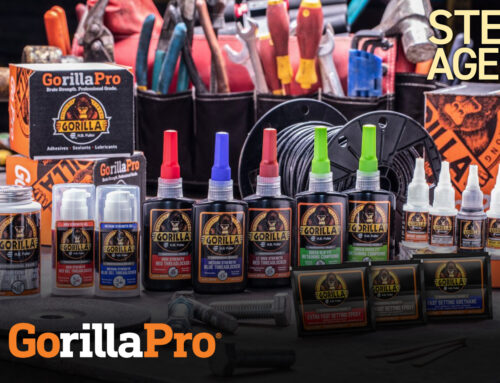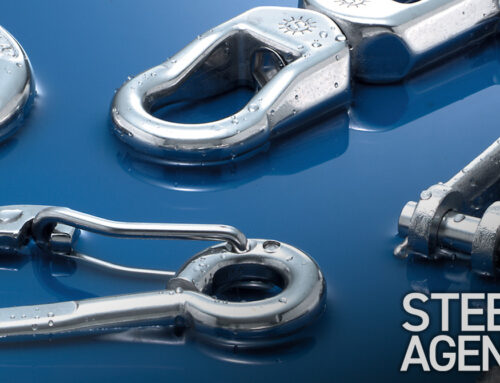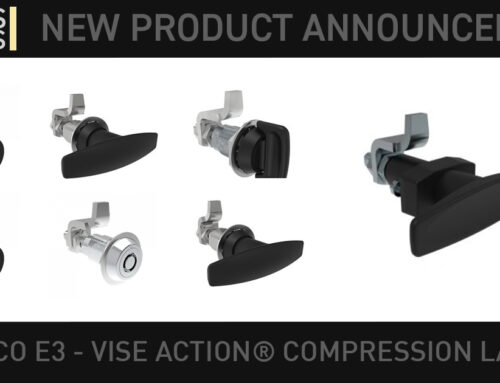Handles would seem to be pretty self-explanatory. Steeves Agencies provides handles for manufacturers for all kinds of applications. They provide a means of pulling, pushing, sliding or otherwise “handling” a door, lid, cover, shroud, box or enclosure. You see them everywhere, on doors, drawers, buses, stairways, toolboxes, access panels, and so many other places. Handles can be formed or molded into a door or lid, or added afterwards, but their function is usually the same.
What are the varieties of handles?
There are a few different styles to choose from: There are surface-mount handles, which are (as the name implies) mounted directly to the surface of the door or lid. They protrude from the door or lid, but are always accessible, easy to grab and are very strong. These handles are made by Sugatsune, and are made of aluminum and plastic. Simple, strong and stylish!
Next are flush-mount or recessed handles, which are recessed into the door or lid in some way. This gives them a very low-profile appearance, since they can almost be completely hidden inside the door or lid. Flush handles are helpful when you want to avoid catching clothing on them, or if space is at a premium. Of course, they just look better in some situations too. Often, flush mount handles are used on larger or heavier enclosures because they are very sturdy and due to their flush installation, less likely to be knocked off accidentally. This example is a P2 Pocket Pull by Southco. Available in a few sizes, these are designed to simply snap in to a panel without any tools or fasteners required!
Another type of handle is a folding handle, which is typically a surface-mount handle that folds to a nearly-flush position. This allows for easier installation without large holes in the panel or door, but still gives a low-profile when not in use. Shown here is a Southco P9 series handle, which hinges at the mounting points so it folds neatly out of the way when not in use!
Materials available for handles
Handles are available in a range of materials, including steel, stainless steel and aluminum (and other more exotic metals), as well as a variety of plastics and composites. In the architectural world, the selection of materials is even more exotic, but we don’t sell many of those!
Applications / novel uses of handles
Handles are everywhere. Car doors, garbage cans, laundry chutes, stairways, shower stalls, bathrooms, tool boxes, kitchen cabinets and a myriad of other places. Handles have a number of uses that don’t always fit the classic definition. You could use a handle as a tie-down point, a safety grab point, or even a coat hanger! This example is a pop-out coat hanger!
If your customer needs to lift, open, close or manipulate a cover, lid, door or cabinet, then you need handles, and they should be matched properly to the application, partly for aesthetics, but also for strength and durability.
How to choose the right ones
The most important detail to consider, aside from style, is the length of the handle, which is typically measured inside the handle. This is the width of the area where your hands would fit. Typically, a 4” handle is suitable for applications where a bare hand would be used to open or close a door. If the application is outside or is subjected to harsher conditions, consider a larger handle (6 inches or more) to allow for gloves or mitts.
Some handles only require a short length because you might only use one or two fingers to open a small door or lid. Others, like a barn door or the doors on a fire truck, need to be much larger for easier access.
Consider Comfort, Too!
When it comes to handles, you can’t be too fussy. Imagine a very expensive car with cheap door handles. If the handle breaks, feels flimsy or is irritating to use, your customer will form an opinion about the entire product based on that handle no matter how well the rest of the car is built. Handles are an obvious touch point, and these touch points are critical to the overall customer experience of your product. We cannot emphasize enough the importance of “touch points”! To be clear, you don’t have to buy the most expensive handle on the market, but you should at least consider if the handle you’ve chosen is creating a bad impression of your product.
If you are considering handles for new product design or for your current manufacturing, our experts are happy to look at your drawings and discuss customer needs/design considerations with you. You can review more articles about handles to get some information, use our handy contact form to reach us or you can call us at 1-800-318-1119 to talk with an expert immediately.






